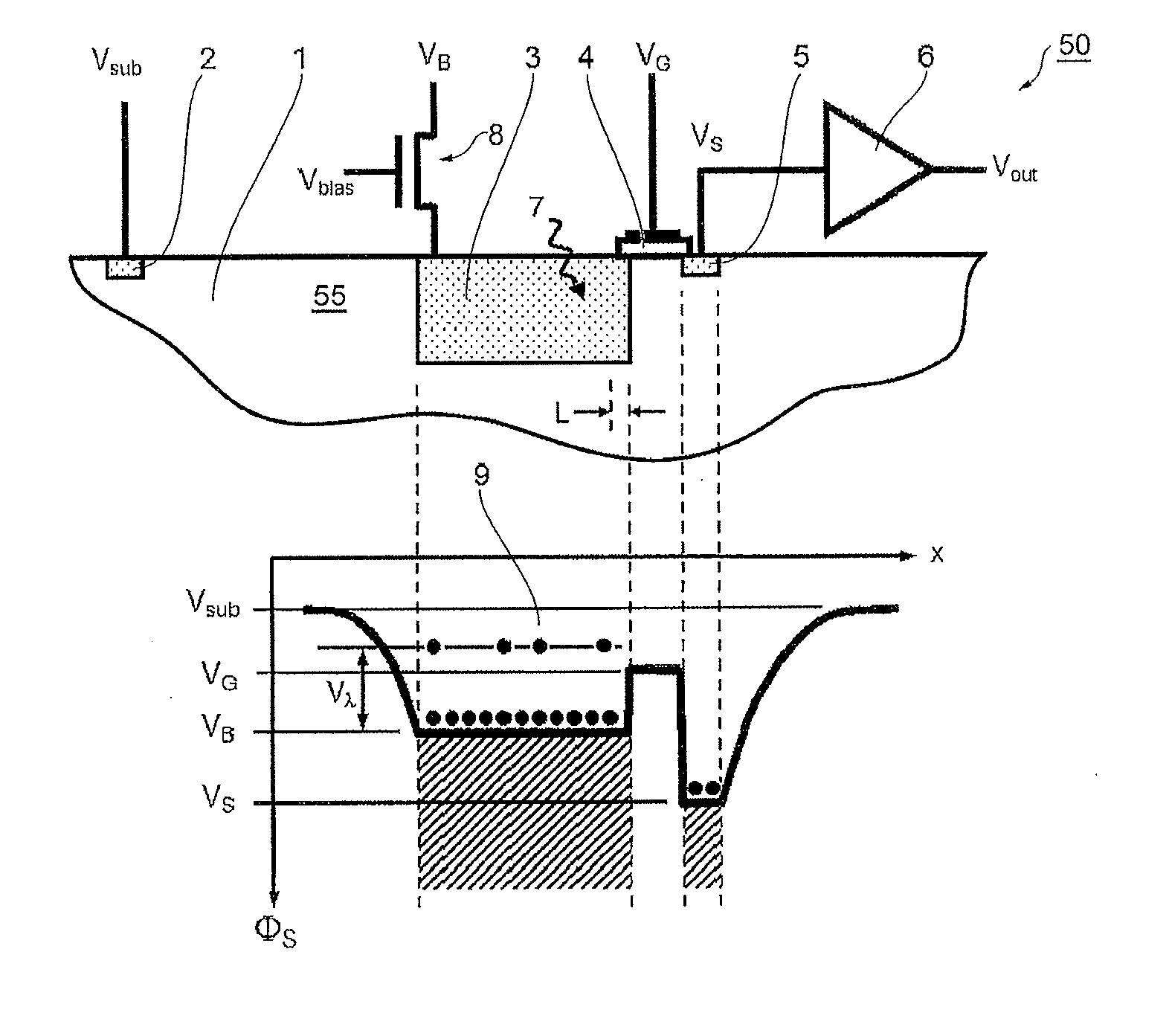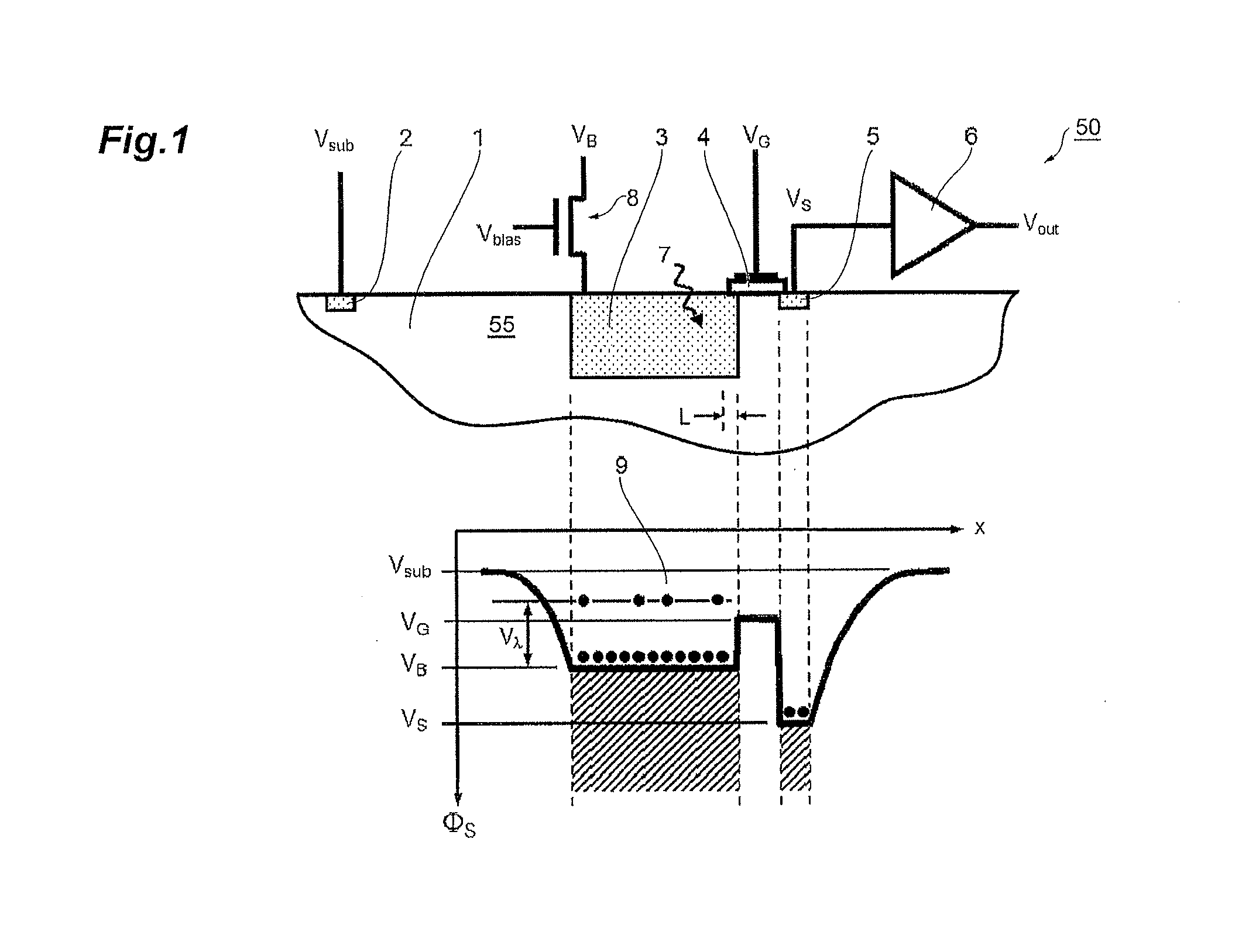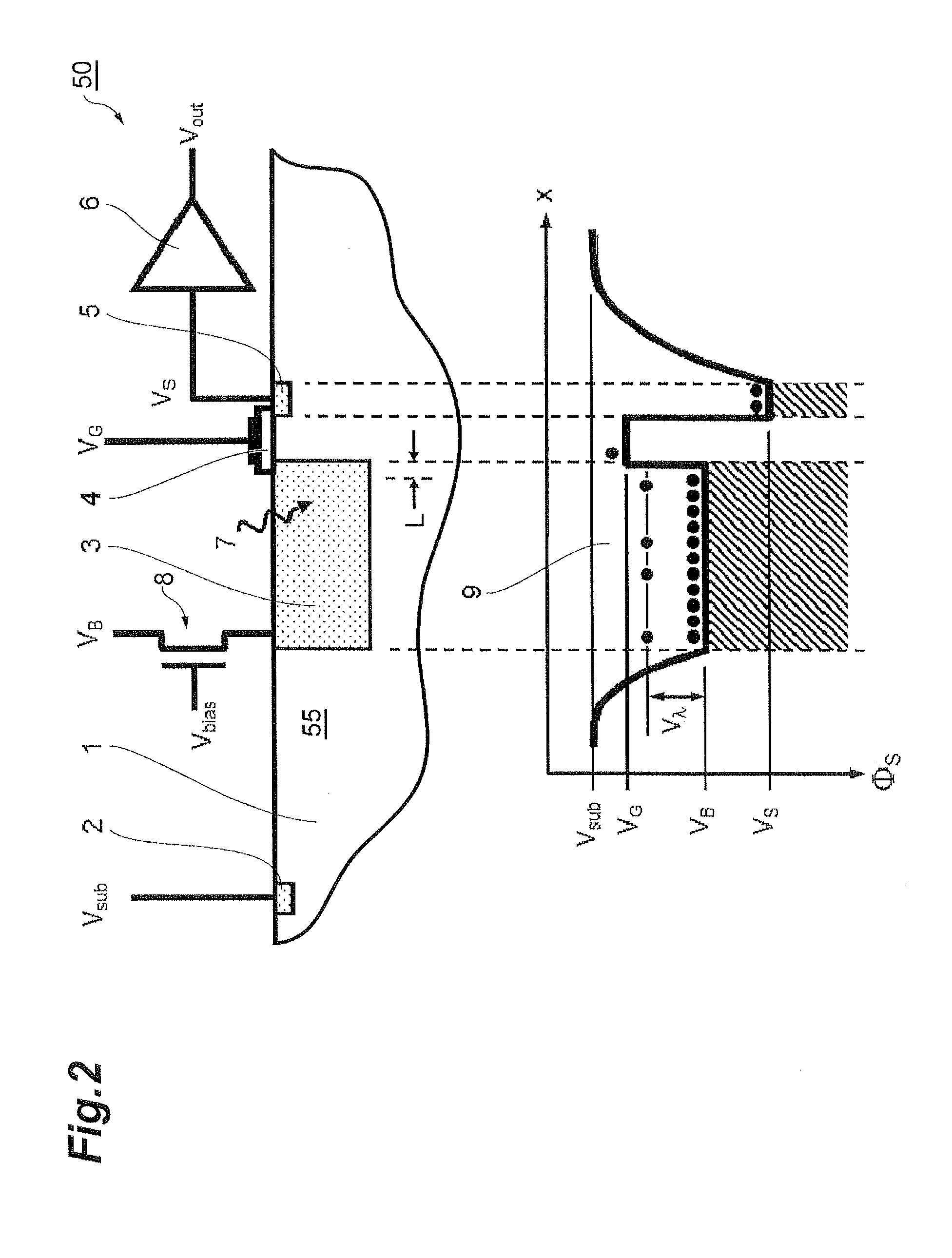Semiconductor photosensor for infrared radiation
a technology of infrared radiation and semiconductors, applied in the direction of optical radiation measurement, radiation control devices, instruments, etc., can solve the problems of limited number of photosensing elements, limited sensitivity of microbolometers, and inability to come close to single-photon sensitivity
- Summary
- Abstract
- Description
- Claims
- Application Information
AI Technical Summary
Benefits of technology
Problems solved by technology
Method used
Image
Examples
Embodiment Construction
[0032]It is a principle object of the invention to provide a photosensor for the highly sensitive detection of infrared radiation in the wide spectral range from 1 to 1000 micrometers.
[0033]A further object of the invention is to provide an infrared photosensor that can be fabricated with industry-standard semiconductor processes such as the widely available silicon-based CMOS processes.
[0034]Another object of the invention is to provide an infrared photosensor whose cutoff wavelength can be chosen fast and adaptively with a voltage.
[0035]Yet another object of the invention is to provide an infrared photosensor device with such a small footprint that one- and two-dimensional infrared image sensors can be created using industry-standard semiconductor processes, resulting for example in an infrared image sensor with at least one Megapixels per square centimeter.
[0036]A final object of the invention is to provide a photosensor device that can distinguish between photocurrents generated...
PUM
 Login to View More
Login to View More Abstract
Description
Claims
Application Information
 Login to View More
Login to View More - R&D
- Intellectual Property
- Life Sciences
- Materials
- Tech Scout
- Unparalleled Data Quality
- Higher Quality Content
- 60% Fewer Hallucinations
Browse by: Latest US Patents, China's latest patents, Technical Efficacy Thesaurus, Application Domain, Technology Topic, Popular Technical Reports.
© 2025 PatSnap. All rights reserved.Legal|Privacy policy|Modern Slavery Act Transparency Statement|Sitemap|About US| Contact US: help@patsnap.com



